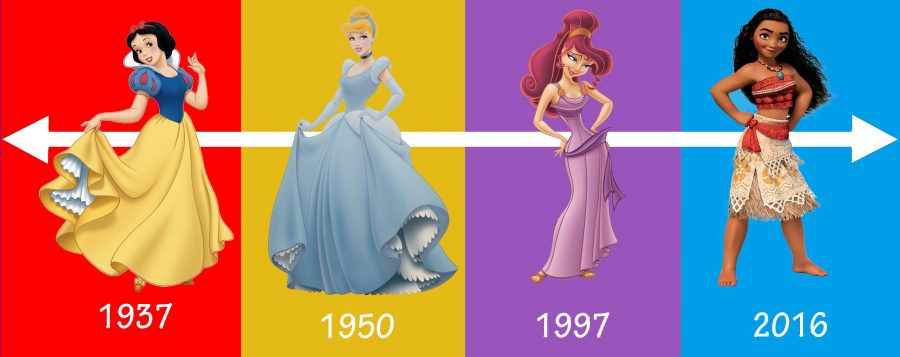OPINION: Disney is on the right path with its new focus
Since the early 1900s, Disney has come a long way with its view on female characters.
Since the first full-length movie, “Snow White and the Seven Dwarfs” (1937), to the most recent “Zootopia” (2016) and “Moana” (2016), Disney films have affected children more than they know and sometimes not in a positive way.
However, this past year, Disney has continued improving the plot and protagonist’s image to reflect current demographics.
Rather than using their influence to teach kids valuable lessons and advocating tolerance, historically, Disney has promoted a fairy tale life, perpetuating the same old stereotypes and storylines where beauty is necessary for success and morality.
Watching Disney movies has been a childhood tradition for many. Constantly watching Disney movies as a primary source of entertainment, however, may be detrimental, making children want to copy the Disney icons.
Researchers from Texas Tech University found a link between girls who play with Disney princesses and higher levels of stereotypical female behavior, such as believing their status is determined by physical beauty and their happiness is dependent on men. They also found boys had higher self-esteem because they felt overly empowered as the dashing male lead.
Further, in “Hercules” (1997), the heroine Megara’s waist caused controversy because it’s impossibly skinny. The body figures of many Disney heroines give girls the wrong image of the “perfect body.” Many critics, particularly feminists, claim that body figures of many Disney heroines, such as Megara’s, promote anorexia and can cause eating disorders in females.
Today, Disney movies are starting to take a different direction, where they don’t focus on romantic interests and unrealistically flawless people.
Disney has attempted to change female body figures, reports BBC’s Tim Brook, with the new Disney heroine Moana. If people look at the comparison between Moana and Cinderella (1950), they would notice Moana is a lot more muscular and curvier. Moana also embarks on a hero’s journey and shows serious girl power instead of trying to attain love and stature by acting innocent and naive.
There are some people who criticize Disney’s changes and think the movies are just getting worse based on their new storylines. They think Disney movies are becoming too political for children, such as commenting on racism.
Disney filmmakers have used racial stereotypes in classic movies like “Dumbo” (1941), where the crowes’ language and attire mock African Americans. Racism and intolerance is wrong, especially in a kid’s movie, which may make children believe it’s okay.
People believe racial stereotypes exist in the relatively new film “Zootopia.” However, philosophy.com reported that author Matthew William Brake said the movie was meant to define the issues of racism through clever symbolism and allusion.
Zootopia is an animal world mixed with predators and prey, much like America with colored and white people. The protagonist, Judy, a bunny, becomes a cop and conducts a big police investigation that ends up creating controversy between the prey and predators, causing the prey to turn on the predators for their “savage ways” all the while showing everyone in Zootopia is really equal.
“Zootopia” shows how white people act towards people of color — many white people historically have assumed all people of color are “savage” when really they’re just like everyone else.
It is important for young children to learn about issues happening in the real world, including the fact that not everything is overly optimistic, not everything ends in the trite happily ever after fashion. Watching movies with good lessons, such as “Zootopia,” may help children grow smarter and more well-rounded.
Like the world, SCHS is very diverse. Disney should continue accepting diversity and make culturally sensitive films that don’t cater to an old, white stereotype, especially considering our current political climate.


